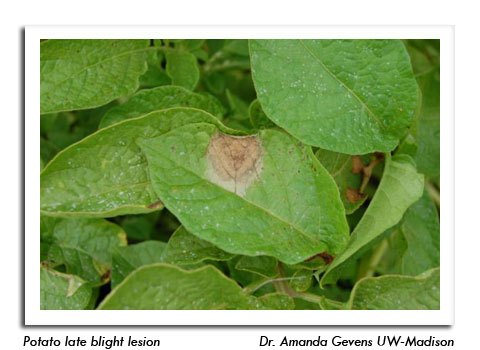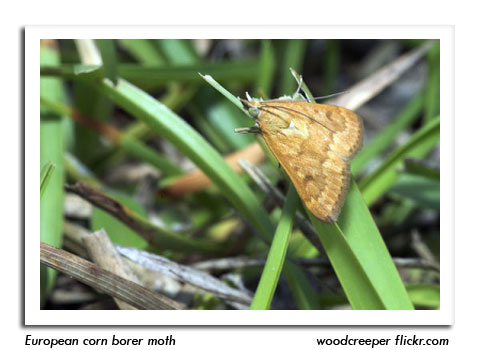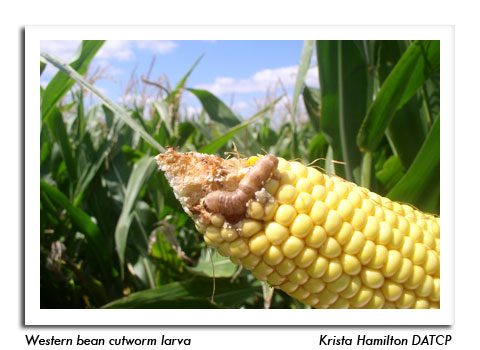
 |
|
|
Looking Ahead
Volume 57 Number 20 Date 08/30/2012 SPOTTED WING DROSOPHILA - Four infestations have been confirmed in Brown, Monroe and Vernon counties. Numerous larvae were collected from blackberries, raspberries and strawberries, and flies are also being captured in vinegar traps. Many additional cases in Bayfield, Dane, Door, Fond du Lac, La Crosse, Langlade, Monroe, Pierce, Richland, Vernon and Washburn County berry farms are suspected but remain unverified. Based on the potential for direct damage to berries (one or more maggots per berry), late-ripening small fruits should be checked frequently for the white, cylindrical maggots as the current harvest season continues. CORN EARWORM - Counts in pheromone traps during the last month have been substantial, with reports of 200 or more moths per trap from locations in Dane and Fond du Lac counties. Larvae in all stages of development are present in low numbers in corn across much of the state. A surge in moth counts at Ripon from 202-229 last week to 651-1,092 this week should ensure that larval populations persist well into September. LATE BLIGHT - Continued development on tomato and potato is reported in Marathon, Rusk, Sheboygan and Waushara counties. Protective treatments of green vines with a late blight-specific fungicide on a 5- to 7-day schedule should be maintained. Potato tubers remain susceptible to infection even when very little foliage is present. EUROPEAN CORN BORER - A count of 22 moths was registered in the Coon Valley black light trap from August 23-29. These individuals signify the beginning of a third flight, an uncommon occurrence in Wisconsin. Egg deposition and hatch are in progress in the southern and central areas, but it is questionable if the resulting third generation of larvae will mature enough to overwinter. WESTERN BEAN CUTWORM - According to the 2012 trapping program results, the moth flight peaked 2-3 weeks earlier and was slightly smaller than that of 2011. The average number of moths per trap was 25, a minor decrease from 28 per trap last year. The cumulative state count of 3,290 moths as of August 30 compares to 4,895 moths in 2011, 10,807 moths in 2010 and 4,928 moths in 2009. Infestations resulting from the flight have been minimal this season. Most larvae are fully developed and have entered the pre-pupal overwintering stage. --Krista Hamilton, DATCP Entomologist 

.jpg)



|
|
|